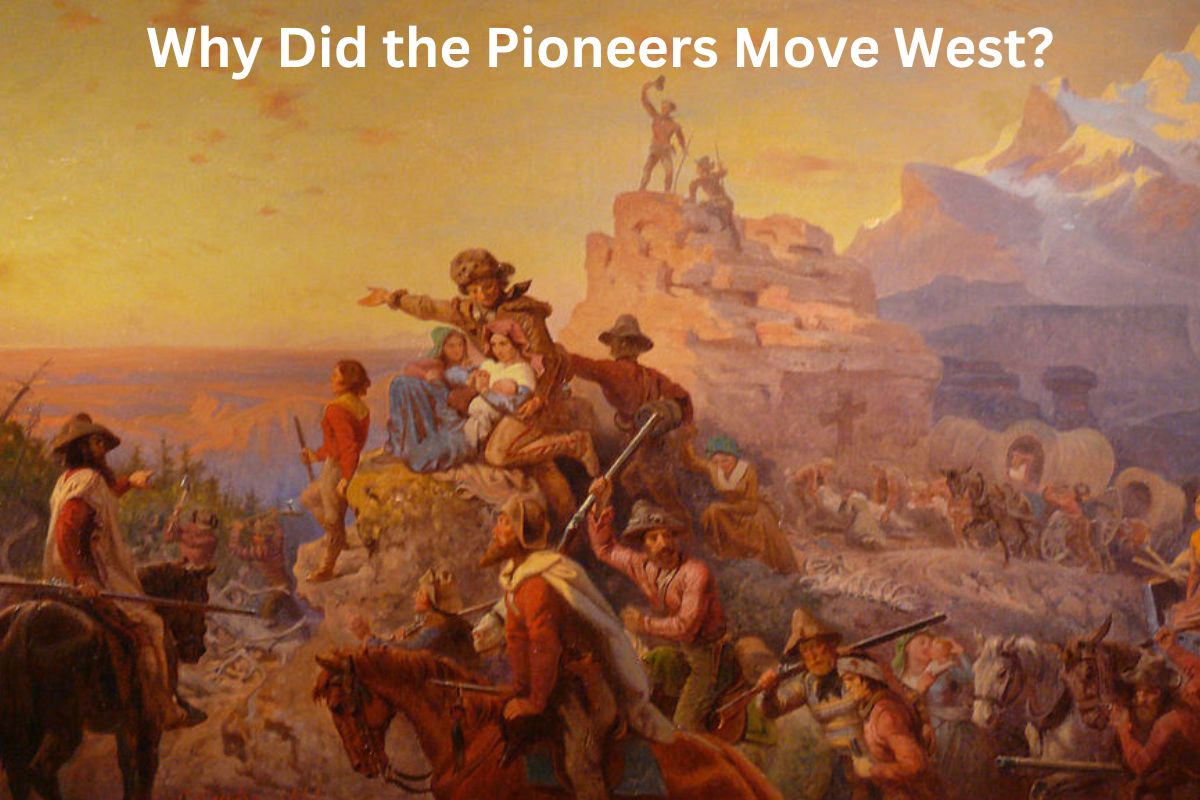Pioneers in the United States moved westward in search of new opportunities, land, and resources. This westward expansion began in the early 1800s and continued until the late 1800s.
The pioneers were motivated by various factors, including economic opportunities, religious freedom, and the idea of Manifest Destiny.
The trans-Appalachian West was a vast, undeveloped area that was rich in resources such as timber, fertile land, and minerals. The pioneers saw the potential for economic gain and new opportunities in this region.
As a result, they began migrating westward in large numbers. Many pioneers were farmers who were attracted to the fertile land in the West, which they believed would provide a better life for their families.
Manifest Destiny was a popular belief among Americans in the 19th century. It was the idea that it was the nation’s destiny to expand its territory from coast to coast.
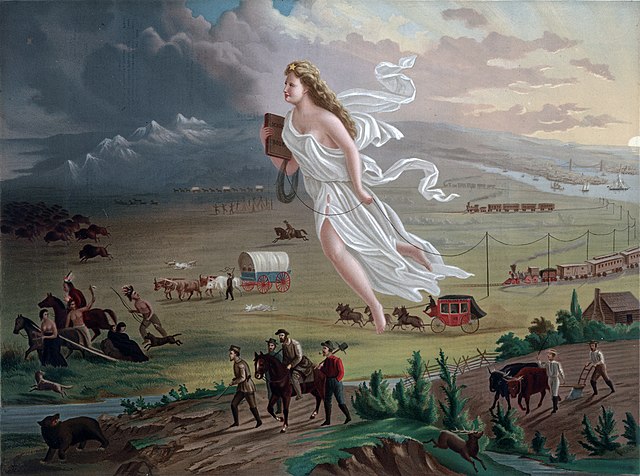
This idea fueled westward expansion and encouraged pioneers to move to the West. The pioneers believed that it was their duty to settle the West and spread American values and culture.
Reasons for Westward Expansion
Land Acquisition
The acquisition of land was one of the primary reasons for westward expansion. The United States was a rapidly growing country, and settlers needed more space to build homes, farms, and businesses.
The Louisiana Purchase of 1803, which doubled the size of the country, opened up vast new territories for settlement. The Oregon Territory, acquired from Britain in 1846, provided even more land for settlers to claim.
Also Read: Timeline of California’s History
In addition to these territories, the Mexican-American War of 1846-1848 resulted in the acquisition of California, Nevada, Utah, and parts of Arizona, Colorado, New Mexico, and Wyoming. The annexation of Texas in 1845 also added a significant amount of land to the United States.
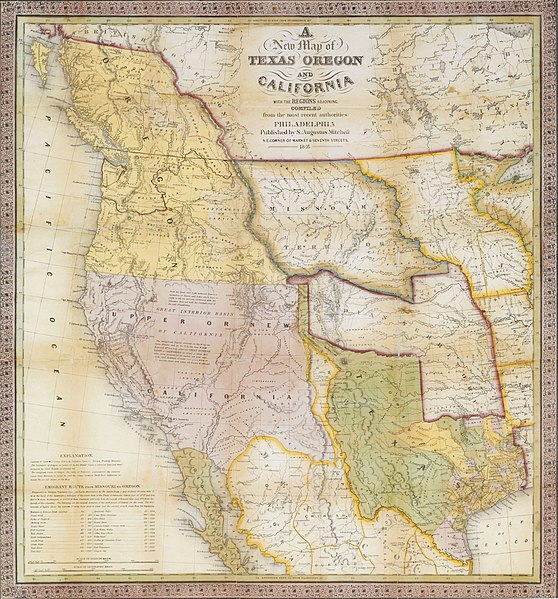
Settlers were attracted to these new territories for a variety of reasons. Some were looking for new economic opportunities, while others wanted to escape crowded cities in the East. Many were drawn by the promise of free or cheap land, which they could use to build a new life for themselves and their families.
Also Read: Timeline of the Westward Expansion
However, the acquisition of this land was not without controversy. Native American tribes were displaced from their ancestral lands, and conflicts arose between settlers and the Mexican government over the ownership of newly acquired territories. Nonetheless, the desire for land and the opportunities it provided drove many pioneers to move westward in search of a better life.
The acquisition of new territories provided a vast expanse of land for settlers to claim and build upon, and was a significant driving force behind westward expansion in the United States.
| Territory | Year Acquired |
|---|---|
| Louisiana | 1803 |
| Oregon | 1846 |
| California, Nevada, Utah, and parts of Arizona, Colorado, New Mexico, and Wyoming | 1848 |
| Texas | 1845 |
- Settlers needed more land for homes, farms, and businesses
- Louisiana Purchase opened up vast new territories for settlement
- The Oregon Territory provided even more land for settlers to claim
- The Mexican-American War resulted in the acquisition of California, Nevada, Utah, and parts of Arizona, Colorado, New Mexico, and Wyoming
- Annexation of Texas added a significant amount of land to the United States.
The Journey West
Routes
In the mid-19th century, pioneers traveled westward to settle in new territories. The most famous route was the Oregon Trail, which began in Independence, Missouri and ended in Oregon City, Oregon. Other routes included the Santa Fe Trail, which led from Missouri to New Mexico, and the California Trail, which ended in California.
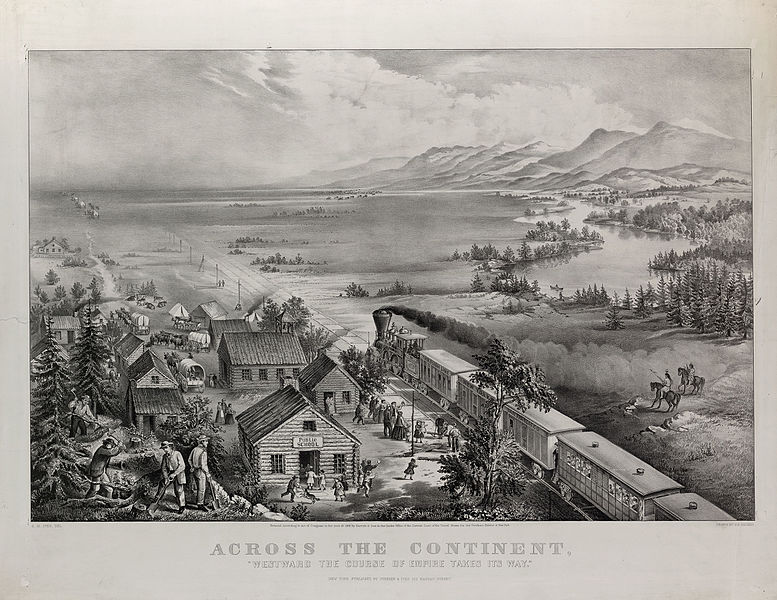
Challenges
The journey west was long and difficult. Pioneers faced many challenges, including disease, harsh weather, and attacks from Native Americans. Mountain men, who had already explored the western territories, provided valuable guidance and assistance to pioneers.
The pioneers also had to cross the Rocky Mountains, which posed a significant challenge. The mountains were difficult to traverse, and many pioneers lost their lives in the process. Once they crossed the mountains, they faced the Great Plains, which were vast and often unforgiving.
Despite these challenges, the pioneers persevered. They were driven by a desire for a better life and the promise of new opportunities in the west. The completion of the transcontinental railroad in 1869 made the journey westward much easier and faster, but the legacy of the pioneers who made the journey before them lives on.
Pioneers and Settlers
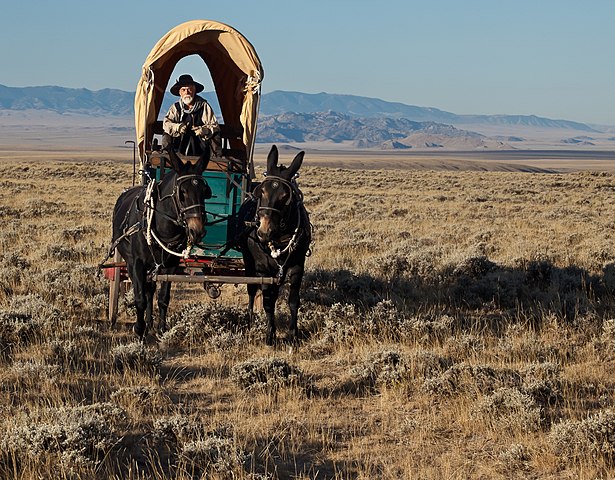
Who Were the Pioneers?
Pioneers were the first people to settle in an area, and they played a crucial role in the westward expansion of the United States. Most pioneers were farmers who were looking for new land to cultivate.
They were often motivated by the promise of cheap land and the opportunity to start a new life. Many pioneers were also immigrants who came to the United States in search of a better life.
Life on the Frontier
Life on the frontier was difficult, and pioneers had to be self-sufficient. They had to build their own homes, grow their own food, and protect themselves from Native American attacks. Many pioneers lived in log cabins, which they built themselves. They also had to hunt for their food and learn to live off the land.
Small Farms and the Homestead Act
The Homestead Act of 1862 was a federal law that provided free land to settlers who were willing to live on and improve the land for at least five years. This law encouraged many people to move west and start small farms. The Homestead Act was especially popular with immigrants, who saw it as an opportunity to own their own land.
Settlers, farmers, and immigrants all played a role in the westward expansion of the United States. The Great Emigration of the 1840s and 1850s brought many settlers to the west, and the Lewis and Clark expedition helped to open up the west to settlement.
James K. Polk’s presidency was marked by his commitment to westward expansion, and he oversaw the annexation of Texas and the Mexican-American War.
Kentucky was an important state in the westward expansion of the United States. Many pioneers from Kentucky moved west in search of new land. The cowboy also played a role in the westward expansion, as they helped to drive cattle from Texas to markets in the west.
The western frontier was a place of opportunity and adventure, but it was also a place of hardship and danger. Immigrants, settlers, and farmers all played a role in shaping the west, and their contributions helped to make the United States the country it is today.
The California Gold Rush
Discovery of Gold
In January 1848, James W. Marshall, a carpenter working for John Sutter, discovered gold in the American River in California. Word quickly spread, and by 1849, thousands of people from all over the world had flocked to California in hopes of striking it rich.
Impact on California and the West
The California Gold Rush had a significant impact on California and the rest of the West. The population of California exploded, and the state became a hub of commerce and industry. The influx of people also led to the formation of new towns and cities, and the construction of roads, railways, and other infrastructure.
Science and Technology
The California Gold Rush also had a significant impact on science and technology. Miners used a variety of tools and techniques to extract gold from the ground, including panning, cradling, and sluicing. As the demand for gold grew, so did the need for more efficient and effective mining methods. This led to the development of new technologies, such as hydraulic mining and dredging.
Overall, the California Gold Rush was a pivotal event in American history. It played a significant role in the development of California and the West, and it had a lasting impact on science and technology.
Manifest Destiny and the Expansion of the United States
President Thomas Jefferson and the Louisiana Purchase
Manifest Destiny was a belief held by many Americans in the 19th century that it was their God-given right to expand westward and settle the entire continent.
Also Read: Manifest Destiny Timeline
This idea was first put into practice by President Thomas Jefferson, who in 1803 negotiated the Louisiana Purchase with France. This doubled the size of the United States and opened up vast new territories for settlement.
James K. Polk and the Mexican-American War
The idea of Manifest Destiny continued to drive American expansion in the decades that followed. President James K. Polk, in particular, was a strong advocate for westward expansion and believed that it was necessary for the United States to control all of the land between the Atlantic and Pacific Oceans.
This led to the Mexican-American War, which resulted in the United States acquiring even more territory, including California and much of the Southwest.
Impact on Native Americans
The push for westward expansion had a devastating impact on Native American tribes who had lived on the land for centuries. As Americans moved westward, they often forced Native Americans off their land and onto reservations. This resulted in the displacement of thousands of Native Americans and the loss of their traditional way of life.
In conclusion, Manifest Destiny played a significant role in the expansion of the United States and the acquisition of new territories. However, this expansion came at a great cost to Native American tribes who were forced off their land and suffered greatly as a result.
Conclusion
In summary, the pioneers moved west for a variety of reasons. Some were motivated by economic opportunities, such as the promise of free land offered by the Homestead Act of 1862. Others were seeking religious freedom or were drawn by the prospect of adventure and exploration.
The following factors also played a significant role in the westward expansion:
- Great Britain’s desire to expand its territory and influence in North America
- The impact of the Civil War, which disrupted the economy and created a need for new land and resources
- The efforts of missionaries to convert Native Americans to Christianity and assimilate them into American culture
Despite the challenges and hardships they faced along the way, the pioneers persevered and helped to shape the future of the United States. Their legacy can be seen in the cities, towns, and communities they founded, as well as in the traditions and values that continue to define American culture today.
